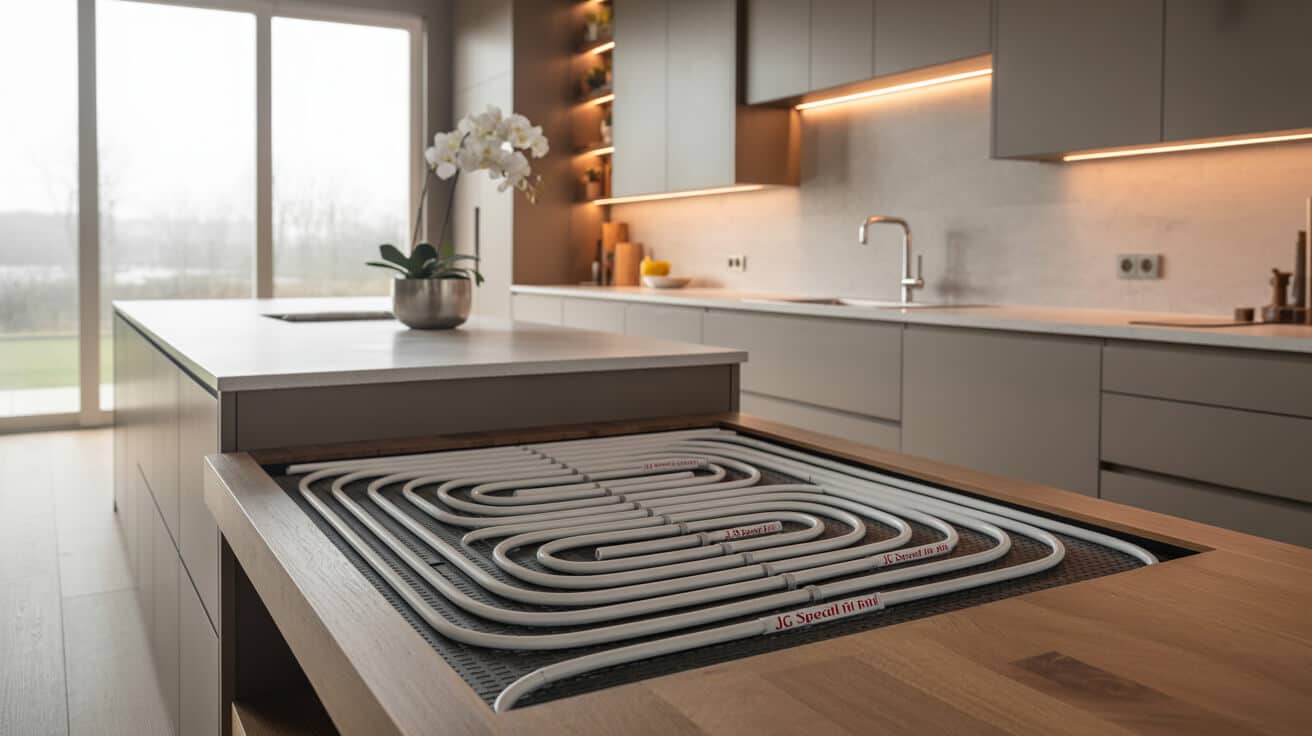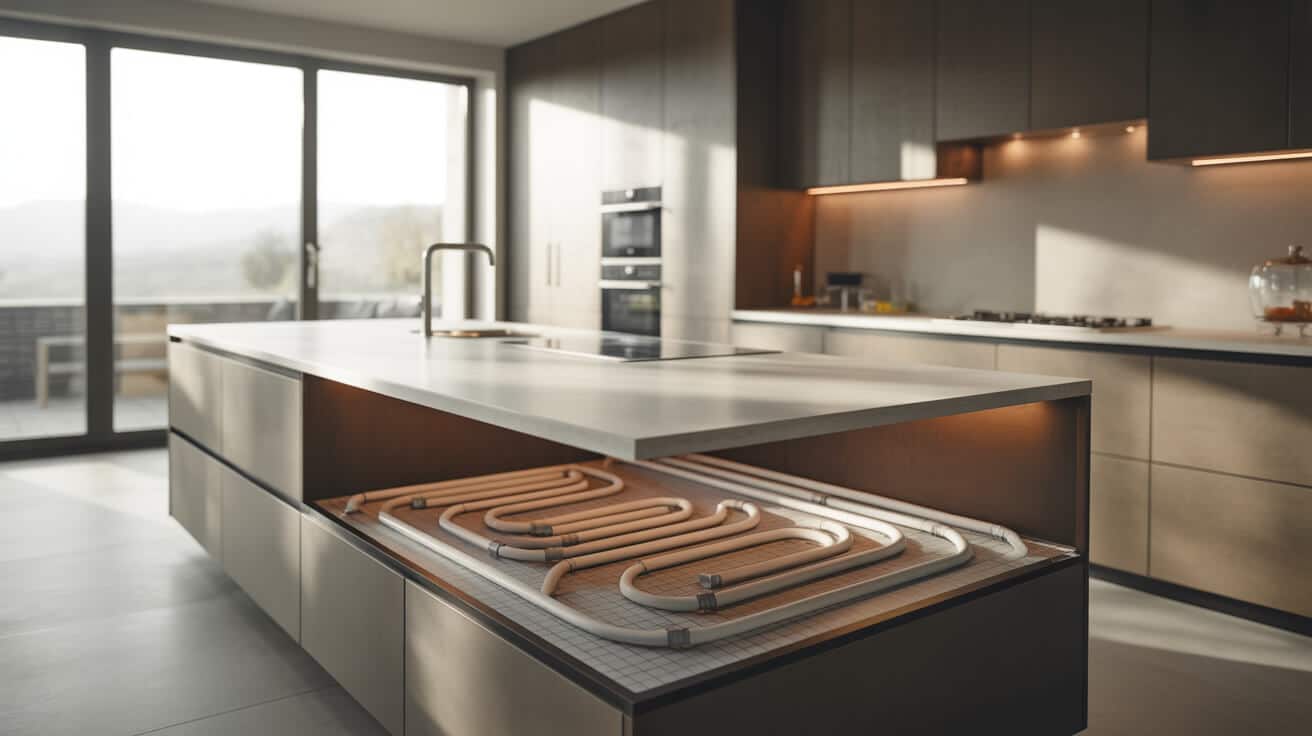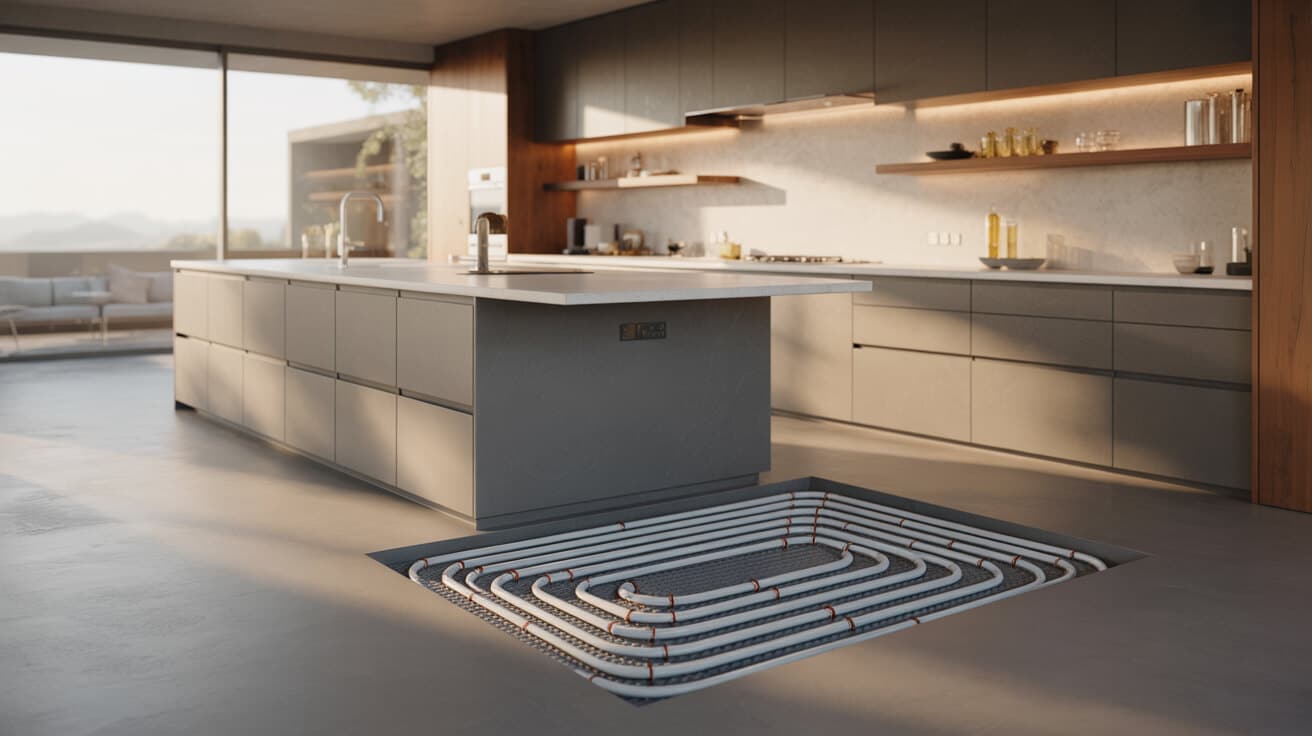JG Speedfit underfloor heating represents a technical solution engineered to deliver an optimal balance between safety, efficiency, and design. The system is widely utilised by established plumbing and heating companies, such as Plumbers 4U, to achieve regulated performance across varied property types. By combining robust construction methods with cutting-edge control systems, the technology consistently satisfies regulatory mandates while enhancing indoor comfort.
Etymology or Name Origin
The designation “JG Speedfit” is indicative of the system’s two primary features: rapid installation and a precise, secure fitting process. Originally coined to emphasise the accelerated installation protocols and reliable performance, the name has evolved into a recognised brand signal associated with quality within the underfloor heating market. This nomenclature reflects a heritage of innovation, where brands are closely aligned with technical excellence and compliant practices.
Overview and Context
Underfloor heating systems provide an alternative to conventional radiator-based heating by embedding the heating mechanism directly beneath the floor structure. This design allows for uniform heat distribution across an entire room, reducing temperature variances and enhancing overall energy efficiency. In the United Kingdom, these systems have become increasingly popular due to rising energy costs, environmental considerations, and evolving building regulations. JG Speedfit underfloor heating, in particular, is positioned as a modern, reliable solution that meets the demands of both new construction and retrofit projects within the plumbing and heating sector.
The integration of underfloor heating within plumbing and heating companies underscores a shift towards more energy-efficient and aesthetically pleasing heating solutions. This context is characterised by:
- An emphasis on consistent heat flow and moderated water temperatures.
- The adoption of high-grade materials such as PEX piping for enhanced durability.
- Compliance with rigorous standards such as those established by WRAS and G3 certification, ensuring that safety and performance measures are maintained in every installation.
History
The development of underfloor heating technology can be traced to early experiments in radiant heating, which sought a more uniform distribution of warmth compared to conventional radiator systems. In the mid-20th century, the use of simple radiant heating techniques provided the groundwork for more refined systems. The evolution of materials technology, particularly the advent of PEX piping, allowed for greater flexibility and durability, paving the way for modern hydronic underfloor heating systems.
During the latter half of the 20th century, increased awareness of energy efficiency and the drive towards sustainable living further accelerated the adoption of underfloor heating systems. Manufacturers began to focus on integrated solutions that combined efficiency with regulatory compliance, such as WRAS approval and G3 certification for unvented systems. This regulatory landscape not only standardised installation practices but also bolstered consumer trust. Over time, JG Speedfit emerged as a key brand within this evolution, distinguished by its adherence to high standards and its ability to integrate innovative techniques into a cohesive, reliable system.

Concept and Description
JG Speedfit underfloor heating is predicated on the principle of radiant heat transfer, where warmth is delivered via a network of pipes embedded beneath the floor surface. The core components of this system include:
Core Components
- Manifolds: Central devices that control the distribution of heated water across various underfloor zones, ensuring that each section of the floor receives a balanced heat output.
- PEX Piping: Flexible, durable pipes that transport heated water with minimal heat loss, critical to maintaining system efficiency.
- Expansion Vessels: Components designed to manage thermal expansion within the system, thereby preventing excessive pressure buildup.
- Safety Valves: These include Temperature and Pressure Relief Valves (TPRV) and Thermostatic Mixing Valves (TMV) which ensure that the system operates within safe parameters.
- Control Units: Sophisticated controls enable precise zoning, allowing differential temperature settings across different areas, thus optimising performance based on usage patterns.
Design and Operational Principles
The design of a JG Speedfit underfloor heating system is guided by the need for uniform thermal distribution and efficient energy usage. The system operates by circulating heated water through a network of pipes, which then radiates heat upward into the living space. This approach differs from traditional radiator systems in that it presents a lower profile, reduces energy consumption, and achieves a more consistent internal environment. Moreover, the system’s modular design facilitates individual zoning, which is essential for both adaptability and energy conservation in diverse building types.
Functionality, Purpose, and Applications
JG Speedfit underfloor heating is engineered to provide practical solutions for a range of heating needs, whether in residential, commercial, or specialised applications. The functionality of the system can be broken down as follows:
Operational Functionality
- Efficient Energy Transfer: By operating at lower water temperatures, the system minimises energy losses and ensures that heat is delivered uniformly over large areas.
- Dynamic Zoning: Separate control of different zones within a building allows for customizable heating, ensuring that only the areas in use receive energy, thus reducing overall consumption.
- Steady Thermal Output: The integrated design—featuring calibrated mixers, expansion vessels, and precise manifolds—supports a continuous and consistent output that matches the heating requirements of the area covered.
Practical Applications
- Residential Uses: In homes, particularly modern constructions and retrofits, underfloor heating is favoured for its aesthetic appeal and unobtrusive design. It is often applied in living areas, bathrooms, and kitchens to achieve a gentle, enveloping warmth that enhances comfort.
- Commercial Applications: In offices, shops, and care homes, the system’s ability to create distinct heating zones is valued. This not only contributes to energy efficiency but also ensures that the indoor environment remains consistently comfortable for occupants.
- Integration with Smart Control Systems: Although the narrative avoids direct technical jargon, the system supports integration with advanced control units to facilitate adaptable scheduling and remote monitoring. This integration helps optimise heating performance during various operating conditions, aligning with broader goals of sustainability and cost-effectiveness.
Classifications and Variants
Underfloor heating systems are often classified based on their operational mechanisms and design types. In the context of JG Speedfit underfloor heating, distinctions can be made between:
- Vented Systems vs. Unvented Systems:
Unvented systems, which operate under pressure and require G3 certification, tend to offer higher efficiency by maintaining lower water temperatures and enhanced heat output. Vented systems, while simpler, are less common in new installations due to limitations in energy performance.
- Hydronic vs. Electric Systems:
Hydronic systems circulate heated water through PEX piping and are recognised for their superior energy transfer capabilities, particularly over larger areas. Electric systems, which use heating mats or cables, are generally applied in smaller contexts or where retrofitting is necessary.
Each variant is designed to address specific installation challenges and operational requirements, thereby ensuring that users can select the most appropriate system for their individual or commercial projects.
Systems, Tools, and Methodologies
The successful installation and maintenance of a JG Speedfit underfloor heating system involve a series of well-defined processes and precise methodologies.
Installation Methodology
- Site Assessment and Planning:
A comprehensive assessment of the building’s structural characteristics, insulation levels, and existing heating systems is essential. This includes evaluating floor construction, subfloor conditions, and the layout necessary to achieve optimal heat distribution.
- System Design and Zoning:
Engineers create detailed system designs that incorporate calculations for heat load, pipe length, and flow rates. Zoning is carefully determined to allow selective control over different areas of the building, ensuring that heating is both efficient and adaptable.
- Pipe Laying and Manifold Setup:
PEX pipes are laid according to the calculated design, with special attention to the routing and clipping methods that ensure minimal heat loss. The manifold, serving as the heart of the distribution system, is installed in a convenient, accessible location for future maintenance and adjustments.
- Commissioning and Balancing:
Following installation, the system undergoes rigorous testing. This includes pressure testing, thermal imaging, and flow ratio checks. commissioning verifies that all safety mechanisms are operational, and system balancing ensures even heat distribution across all zones.
Diagnostic and Testing Tools
- Thermal Imaging Cameras:
These devices are utilised to map temperature distribution across the floor surface, aiding in the identification of underperforming zones.
- Pressure Gauges and Test Pumps:
Essential for ensuring that the system is operating at the correct pressure levels and that there are no leaks in the pipeline network.
- Visual and Acoustic Leak Detection:
Combined methods are used to spot anomalies that might indicate a leak, allowing for prompt corrective measures.
Maintenance and Servicing Methodologies
- Routine Inspections:
Regularly scheduled inspections are crucial for identifying system imbalances, verifying the functioning of safety valves, and ensuring that insulation and pipe lagging remain intact.
- Power Flushing and Philtre Cleaning:
Procedures such as power flushing remove accumulated sludge and debris from the system, ensuring that water circulation remains efficient.
- Component Replacement and Calibration:
Parts such as expansion vessels and control units may require periodic replacement or recalibration to maintain system performance and safety.

Stakeholders and Entities Involved
The operation and maintenance of JG Speedfit underfloor heating systems involve several key stakeholders who each contribute to the overall quality and compliance of installations.
Industry Professionals
- Certified Installers:
Licenced and qualified installers carry out the physical installation, ensuring that each component is securely fitted and that the system adheres to all relevant standards.
- Plumbing and Heating Companies:
Companies such as Plumbers 4U are recognised for providing integrated services that cover everything from system design to post-installation maintenance.
- Technical Consultants and Engineers:
Professionals who design the system layout, perform diagnostic tests, and assist in the commissioning process. Their expertise guarantees that installations meet both performance and regulatory expectations.
Regulatory Bodies
- Standard-Setting Organisations:
Entities responsible for defining and enforcing regulations such as WRAS and G3 certification play a critical role. Their guidelines ensure that underfloor heating systems operate safely and efficiently.
- Building Control Officers:
These authorities verify that all installations comply with local building regulations, particularly in relation to energy performance and safety requirements.
End-Users and Facility Operators
- Homeowners and Landlords:
Individuals who benefit from enhanced comfort and energy efficiency while being reassured by compliance with stringent safety standards.
- Commercial Property Managers:
Responsible for ensuring that heating systems in multi-room or multi-zone environments are reliable and cost-effective.
- Facilities Directors in Public and Industrial Settings:
Tasked with maintaining high standards of operational efficiency, these professionals rely on thorough documentation and stringent maintenance protocols.
Legal, Regulatory, and Ethical Considerations
JG Speedfit underfloor heating is constructed and installed in strict adherence to the legal frameworks and regulatory requirements governing the Plumbing & Heating industry in the United Kingdom.
Regulatory Compliance
- Building Regulations Part G:
These regulations ensure that all systems adhere to sanitary and hot water safety guidelines, specifying necessary temperature controls and system pressures.
- WRAS Approval:
Products must be certified under the Water Regulations Advisory Scheme, indicating that they meet high standards for water conservation and safety.
- G3 Certification for Unvented Systems:
Unvented heating systems require a G3 certification to verify they operate under safe, constant pressure conditions.
- CP12 Certification:
Particularly for landlords and property managers, CP12 certificates confirm that gas appliances associated with the heating system have been tested and meet safety standards.
Ethical and Consumer Considerations
- Consumer Protection:
Adherence to these regulations protects end-users by ensuring that the systems installed are safe, reliable, and free from hazards such as leaks or inadequate pressure management.
- Transparency and Documentation:
Comprehensive commissioning reports, maintenance logs, and certification records contribute to an ethical framework that supports accountability throughout the lifecycle of the system.
- Sustainability:
Emphasising energy efficiency and reduced environmental impact aligns with broader societal goals around sustainability and responsible energy use.
Performance Metrics and Data
The effectiveness of a JG Speedfit underfloor heating system is assessed using various quantitative and qualitative metrics that encompass energy efficiency, reliability, and regulatory compliance.
Key Performance Indicators
- Energy Efficiency Ratings:
Measurement of energy consumption relative to heat output, expressed as a ratio, provides a benchmark for performance.
- Thermal Output Distribution:
Data collected from thermal sensors help verify that heat is evenly distributed across the entire floor plan.
Monitoring and Maintenance Metrics
- Pressure and Flow Measurements:
Regular testing ensures that the system operates within designed pressure ranges and that water flow meets the calculated requirements.
- Safety Device Integrity:
Continuous monitoring of safety features (TPRVs, TMVs) is crucial for preventing over-pressurisation and ensuring that emergency mechanisms engage as needed.
- Commissioning and Balancing Records:
Detailed logs maintained during installation serve as baseline data for ongoing system performance assessments.
| Metric | Measurement Method | Importance |
|---|---|---|
| Energy Efficiency | kWh per m²; operational cost ratio | Determines long-term savings |
| Thermal Uniformity | Infrared thermal imaging | Ensures even heat distribution |
| Pressure Stability | Digital pressure gauges | Verifies system integrity |
| Safety Device Functionality | Routine calibration and testing | Prevents hazardous failures |
Challenges, Barriers, and Limitations
Despite its significant advantages, the implementation of underfloor heating systems like JG Speedfit faces a variety of challenges. These issues can be grouped according to their severity and impact.
Level 1: Latent Issues
- Minor System Imbalances:
Slight inconsistencies in heat distribution, which may arise from variations in pipe spacing or floor structure.
- Gradual Pressure Loss:
Small leaks or gradual degradation of insulation over time can lead to reduced system pressure and efficiency.
- Delayed Heat-Up:
The inherent design of underfloor systems sometimes results in slower warming of spaces during initial operation, a phenomenon that generally stabilises after commissioning.
Level 2: Operational Challenges
- Control Calibration Difficulties:
Adjusting smart controllers to achieve the ideal zone temperatures may be challenging, especially when accommodating multiple zones with varying insulation efficiencies.
- Inconsistent Zoning Results:
Challenges in balancing flow across different areas can lead to some zones overheating while others remain underheated.
- Troubleshooting Ambiguities:
Diagnosing issues may sometimes be complicated due to overlapping technical signals and subtle performance deviations. This requires a systematic approach for accurate fault detection.
Level 3: Urgent Concerns
- System Failure:
In exceptional cases, a malfunction in the central control or a significant leak can cause a complete loss of hot water, requiring immediate intervention.
- Major Leak Emergencies:
Significant water leakage not only compromises the system’s efficiency but also poses risks to property and structural integrity, necessitating prompt remedial action.
- Regulatory Non-compliance:
Failing to adhere to established standards such as WRAS or G3 certification can lead to legal repercussions and compromise the safe operation of the system.
Impact, Influence, and Legacy
JG Speedfit underfloor heating has made a notable contribution to the fields of plumbing and heating by elevating installation standards and improving energy management practices.
Industry Contributions
- Standardisation:
The integration of stringent regulatory requirements into the system design has set elevated benchmarks, influencing broader industry practices by reinforcing quality and safety standards.
- Enhanced Efficiency:
With its ability to distribute heat uniformly and operate at lower water temperatures, the system significantly reduces energy consumption, leading to observable cost savings and improved environmental performance.
- User Comfort:
The technology achieves a high degree of comfort by eliminating cold spots and providing consistent heat distribution, resulting in improved living and working conditions.
Economic and Environmental Legacy
- Cost Benefits:
The energy savings derived from efficient system performance translate into lower utility bills for both residential and commercial properties.
- Sustainability:
In an era that emphasises reduced carbon emissions and energy efficiency, underfloor heating systems play a critical role in meeting environmental targets, supporting sustainable building initiatives.
- Regulatory Influence:
By adhering to and often exceeding the requirements set by regulatory bodies, the system influences the evolution of building codes and compliance standards.
Future directions, cultural relevance, and design discourse
Emerging trends within the field of underfloor heating suggest that innovations will continue to evolve in response to changing energy landscapes and user demands. Future developments are likely to emphasise further integration, improved diagnostics, and enhanced sustainability.
Technological Evolution
- Refined Control Systems:
Innovations are expected to drive enhanced control mechanisms that facilitate ultrafine temperature zoning and system balancing. Future systems may incorporate advanced algorithms capable of adapting heating patterns in real time based on occupancy and environmental changes.
- Integration with Renewable Energy:
With a growing emphasis on sustainability, future iterations of underfloor heating may increasingly integrate with renewable energy sources such as heat pumps and solar thermal systems. This would further optimise efficiency and contribute to reduced carbon footprints.
- Enhanced Diagnostic Tools:
Advances in thermal imaging and pressure-sensing technologies will likely yield more effective diagnostic tools, enabling proactive maintenance and minimising downtime.
Cultural and Aesthetic Implications
- Architectural Integration:
As architectural trends continue to favour minimalism and clean design, underfloor heating offers a discreet solution that eliminates unsightly radiators and visible piping. This integration not only enhances the aesthetic appeal but also allows for more flexible interior design.
- Sustainable Living:
In an age where environmental impact is of paramount concern, systems like JG Speedfit underfloor heating underscore the shift toward sustainable building practices. Emphasis on energy conservation and regulatory compliance resonates strongly with the cultural movement toward green building and responsible consumption.
- Design Discourse:
The evolution of underfloor heating technology has sparked debates on optimal design, energy management, and user interface connectivity. These discussions influence both academic research and practical applications, paving the way for innovations that balance technical feasibility with aesthetic and functional needs.
Regulatory and Industry Forecasts
- Regulatory Adaptation:
Future regulatory frameworks are likely to place an increasing emphasis on energy performance and safety standards, prompting further advancements in underfloor heating technology.
- Market Penetration:
With rising energy costs and heightened environmental awareness, the adoption rate of underfloor heating is expected to increase. This will likely drive economies of scale, resulting in cost reductions and improved access to advanced technologies for both domestic and commercial applications.
- Emerging Research Areas:
Areas such as system longevity, real-time diagnostics, and integration with broader building management systems are poised to become focal points for academic and industrial research, expanding the technological corpus related to underfloor heating.

